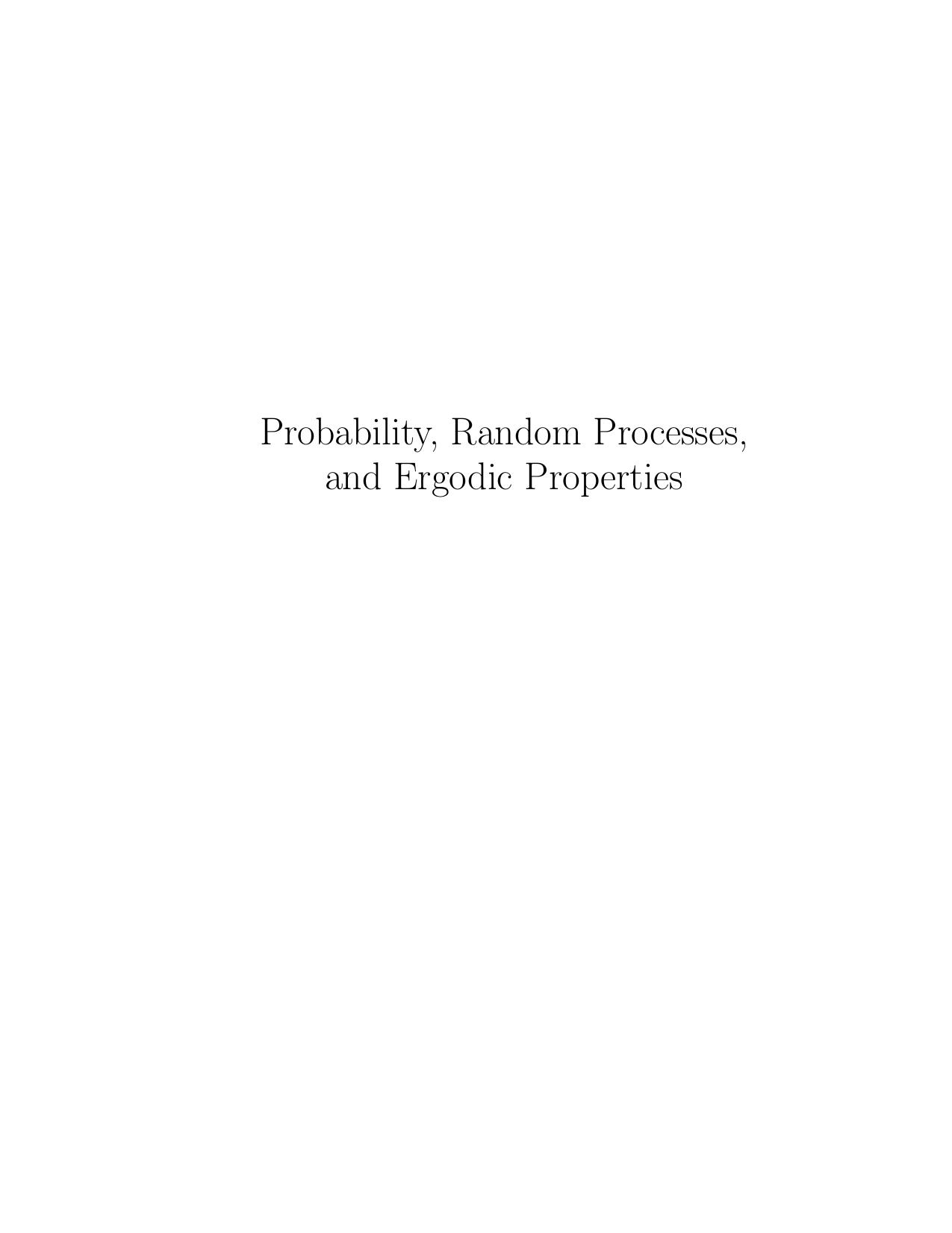Probability, Random Processes, and Ergodic Properties by Robert M. Gray

Author:Robert M. Gray [Gray, Robert M.]
Language: eng
Format: epub, pdf
Published: 2011-02-19T05:00:00+00:00
5.2. MEASUREMENTS AND EVENTS
97
where the F (i) are disjoint, and hence since gn ∈ M(σ(f )) that g−1(r
n
i) = F (i) ∈ σ(f ).
Since σ(f ) = f −1(B(A)), there are disjoint sets Q(i) ∈ B(A) such that F (i) = f−1(Q(i)). Define the function hn : A →
by
M
hn(a) =
ri1Q(i)(a)
i=1
and
M
M
hn(f (ω))
=
ri1Q(i)(f(ω)) = ri1f−1(Q(i))(ω)
i=1
i=1
M
=
ri1F (i)(ω) = gn(ω). i=1
This proves the result for simple functions. By construction we have that g(ω) = limn→∞ gn(ω) =
limn→∞ hn(f(ω)) where, in particular, the right-most limit exists for all ω ∈ Ω. Define the function h(a) = limn→∞ hn(a) where the limit exists and 0 otherwise. Then g(ω) = limn→∞ hn(f(ω)) =
h(f (ω)), completing the proof.
2
Thus far we have developed the properties of σ-fields induced by random variables and of classes of functions measurable with respect to σ-fields. The idea of a σ-field induced by a single random variable is easily generalized to random vectors and sequences. We wish, however, to consider the more general case of a σ-field induced by a possibly uncountable class of measurements. Then we will have associated with each class of measurements a natural σ-field and with each σ-field a natural class of measurements. Toward this end, given a class of measurements M, define σ(M) as the smallest σ-field with respect to which all of the measurements in M are measurable. Since any σ-field satisfying this condition must contain all of the σ(f ) for f ∈ M and hence must contain the σ-field induced by all of these sets and since this latter collection is a σ-field, σ(M) = σ(
σ(f )).
f ∈M
The following lemma collects some simple relations among σ-fields induced by measurements and classes of measurements induced by σ-fields.
Lemma 5.2.2 Given a class of measurements M, then
M ⊂ M(σ(M)).
Given a collection of events G, then
G ⊂ σ(M(σ(G))).
If G is also a σ-field, then
G = σ(M(G)),
that is, G is the smallest σ-field with respect to which all G-measurable functions are measurable. If G is a σ-field and I(G) = {all 1G, G ∈ G} is the collection of all indicator functions of events in G, then
G = σ(I(G)),
that is, the smallest σ-field induced by indicator functions of sets in G is the same as that induced by all functions measurable with respect to G.
Download
Probability, Random Processes, and Ergodic Properties by Robert M. Gray.pdf
This site does not store any files on its server. We only index and link to content provided by other sites. Please contact the content providers to delete copyright contents if any and email us, we'll remove relevant links or contents immediately.
Algorithms of the Intelligent Web by Haralambos Marmanis;Dmitry Babenko(16234)
Jquery UI in Action : Master the concepts Of Jquery UI: A Step By Step Approach by ANMOL GOYAL(9386)
Test-Driven Development with Java by Alan Mellor(7735)
Data Augmentation with Python by Duc Haba(7608)
Principles of Data Fabric by Sonia Mezzetta(7378)
Learn Blender Simulations the Right Way by Stephen Pearson(7294)
Microservices with Spring Boot 3 and Spring Cloud by Magnus Larsson(7137)
Hadoop in Practice by Alex Holmes(6587)
RPA Solution Architect's Handbook by Sachin Sahgal(6515)
The Infinite Retina by Robert Scoble Irena Cronin(6216)
Big Data Analysis with Python by Ivan Marin(5933)
Life 3.0: Being Human in the Age of Artificial Intelligence by Tegmark Max(5512)
Pretrain Vision and Large Language Models in Python by Emily Webber(4894)
Infrastructure as Code for Beginners by Russ McKendrick(4653)
Functional Programming in JavaScript by Mantyla Dan(4436)
WordPress Plugin Development Cookbook by Yannick Lefebvre(4382)
The Age of Surveillance Capitalism by Shoshana Zuboff(4243)
Embracing Microservices Design by Ovais Mehboob Ahmed Khan Nabil Siddiqui and Timothy Oleson(4146)
Applied Machine Learning for Healthcare and Life Sciences Using AWS by Ujjwal Ratan(4135)
